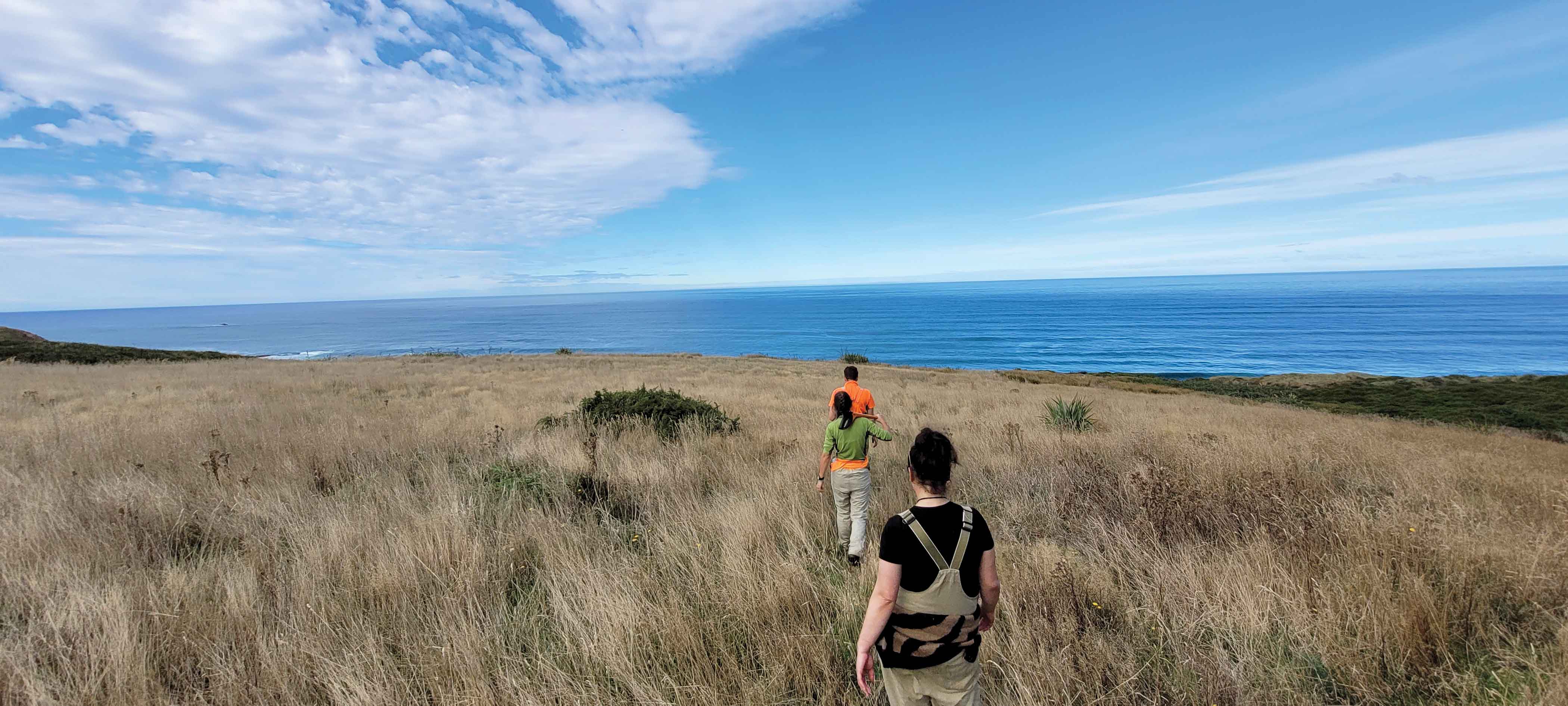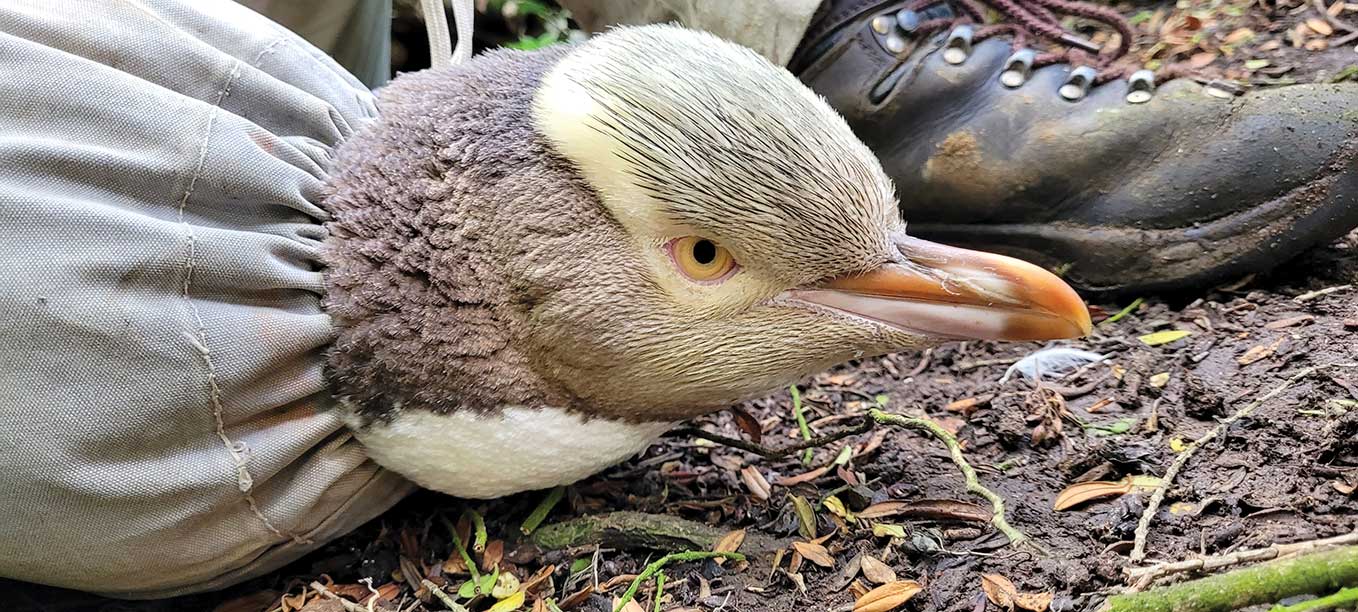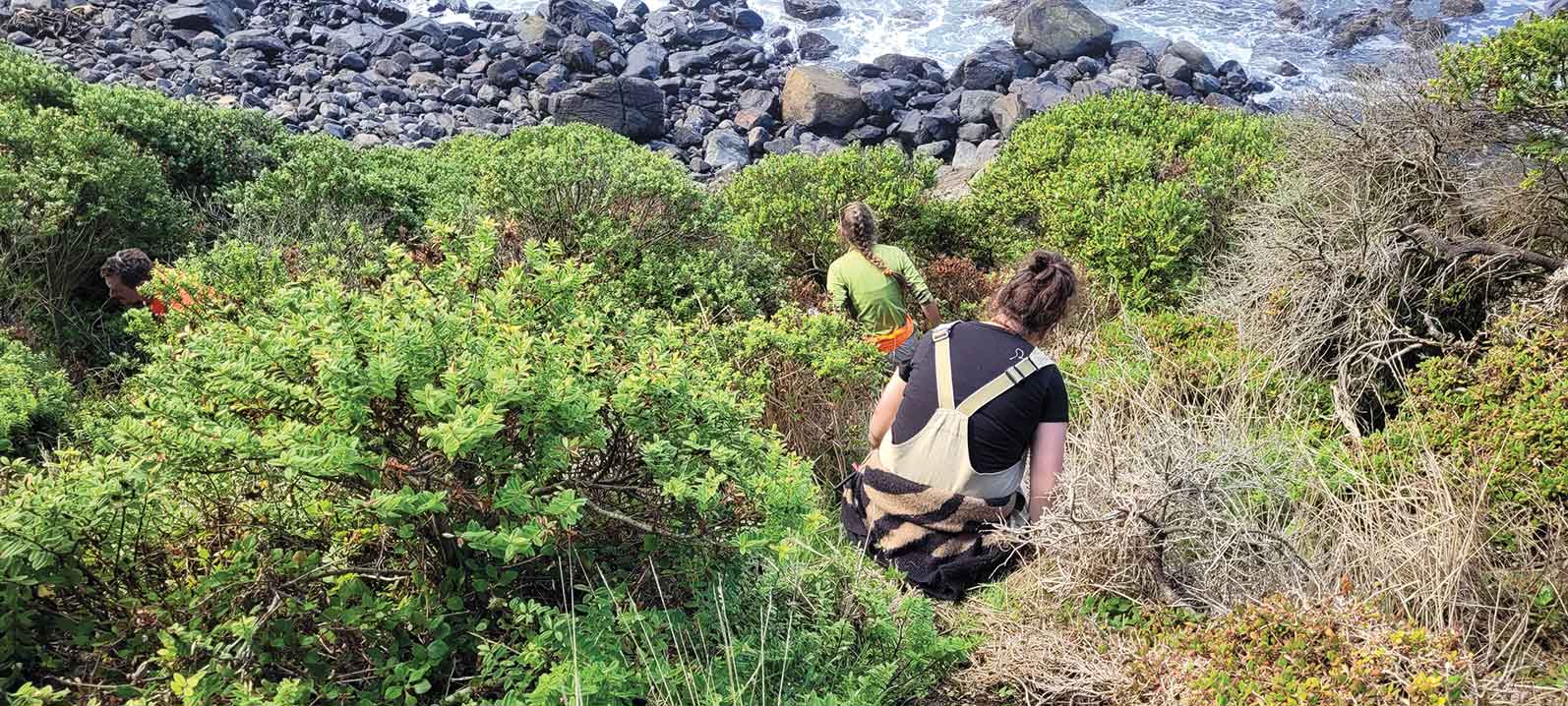Takaraha
Jul 11, 2023

Nā Puawai Swindells-Wallace

The Ngāi Tahu takiwā is home to the nationally endangered takaraha or yellow-eyed penguin, also called hoiho. This seabird is one of the rarest penguin species in the world and is a taonga species for Ngāi Tahu.
The northern population inhabits whenua on the south-east shores of Te Pātaka-a-Rākaihautū, Moeraki, Ōtākou, Waikawa Harbour in the rohe of Awarua, Rakiura and Whenua Hou. The southern colony lives on Motu Maha (Auckland Island) and Motu Ihupuku (Campbell Island) in the sub-Antarctic. The southern colony rarely mixes with those in the north and have their own distinct DNA.
The small northern population decreases daily with threats like predators, disease and starvation, while problems such as skewed sex ratio, difficulty finding mates and low genetic diversity hamper breeding success.
If current trends continue, the northern population will likely be extinct by 2060. The 2019-2020 season saw breeding pair numbers at their lowest since 1990. This taonga species is rapidly declining in abundance and their serious plight requires action to avoid extinction.
Ongoing participation from mana whenua in the species management not only improves survival, but also sustains a connection to the natural environment that ensures intergenerational mātauranga is kept alive.
The ability for whānau to access, use and make decisions in relation to natural resources is fundamental to the practice of rangatiratanga and retention of mana and ahi kā. The Ngāi Tahu Claims Settlement Act 1998 sets out our rights as decision-makers in the management of taonga species. One of the ways we currently practise those rights is through external representation with Ngāi Tahu whānau nominated by their Papatipu Rūnanga and appointed to external conservation roles work with taonga species.
As Matariki rises and we take time to reflect and plan alongside the maramataka, takaraha also look towards a new season after several months spent moulting. Over four weeks they sit onshore without visiting the ocean again until they’ve grown a new set of feathers. 
Between now and September, they keep their feathers tidy and clean, spend time socialising, feeding and courting. Yellow-eyed penguins are loyal partners with 90 percent of breeding pairs reuniting each season, usually only needing to find a new mate if their partner dies.
I recently visited takaraha, which coincided with their moult season. Under the moon of Tamatea-āio, Tamatea-angana and Tamatea-kai- ariki, I ventured south from Ōtautahi to Ōtākou, Moeraki and Curio Bay. In Ōtākou there is a rehabilitation centre, Penguin Place, which is just for yellow-eyed penguins. There are also multiple sites along the peninsula where they reside.
Rehabilitation and intervention, while key to their survival, is very expensive, and access to quality oily fish that mimic the natural diet of takaraha is difficult to come by. Each penguin consumes several kilos of fish every day. Penguin Place has strong relationships with companies like Sanford in Timaru, who support the centre by supplying fish.
Hosted for three days by Richard Seed, Department of Conservation (DOC) senior ranger for coastal species, on day one we visited Penguin Place. The centre is a conservation project funded through guided tours, which are regular during the summer. DOC staff and Penguin Place work together to deliver penguins to rehab and then release them when they are healthy.
When we visited, five takaraha were ready to be released and were carefully lifted into vehicles. Off we went to the top of Boulder Beach, the journey down to the shoreline just shy of 3 km. To carry a 7 kg yellow- eyed penguin without a bite from a sharp beak was, to say the least, challenging.
Later that afternoon, I sat with Hoani Langsbury at the Royal Albatross centre near Pukekura Pā. This site was once occupied by Waitaha, before Kāti Mamoe and Kāi Tahu joined forces to conquer the pā. It was also where Karetai and Korako signed the Treaty of Waitangi in 1840 on a ship anchored at Pukekura.
Hoani shared his knowledge and experiences of working for hapū and iwi and his involvement with takaraha conservation.
On day two, Richard and I were joined by colleague Hendrik Schultz, a marine technical adviser. We drove north to Kātiki Point to meet the team at Penguin Rescue. I spoke to David Higgins, Te Upoko o Moeraki Rūnaka, over the phone and was reminded to keep in close contact when working with takaraha in the Moeraki takiwā. Rosalie Goldsworthy and her team at Penguin Rescue gave us a warm welcome and we were well looked after with hot drinks between traversing the point to find moulting hoiho. The work this small team accomplishes is nothing less than inspiring.
On the last day, we arrived safe in the south at Waikawa Harbour, specifically Curio Bay where we met DOC Ranger, Cheryl Puller, and DOC service manager for Murihiku, Ros Cole. More moult searches were done and we took in the views of the Mātaitai reserve, a unique yellow-eyed penguin habitat next to a petrified forest dating back to the Jurassic period.
I learnt a wealth of information about the cumulative effects of fishing, trawling, warmer temperatures, food chain disruption and the degradation of ocean and marine environments that are having severe consequences on many species. Disease and illness are a common threat often discussed between those involved in daily takaraha operations. Their habitat continues to be diminished by human industry and this endangered species indicates the poor state of our natural resources.
A project is underway to uncover the causes of two diseases that are bringing illness and death in chicks. Sadly, the diseases have caused a decline for the northern population with the death of more than 20 percent of hatched chicks each season.

Research has uncovered a virus associated with one of the diseases called respiratory distress syndrome, or RDS. The disease was discovered in 2019 and has caused many deaths in young chicks. Another disease causing mouth sores, starvation, and death since the early 2000s, is diphtheritic stomatitis, which has led to the identification of a new virus and further research.
Janelle Wierenga, post-doctorate fellow and veterinarian at the University of Otago and Massey University, is part of the primary investigation team working with colleagues alongside the Wildlife Hospital Dunedin and DOC to uncover more about these diseases. Identification of potential causes will inform management, including vaccine production or vector management.
Puawai Swindells-Wallace holds a current external appointment to the taonga species recovery group and is the representative for takaraha or hoiho (yellow-eyed penguin)